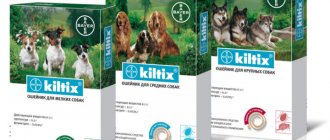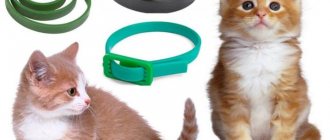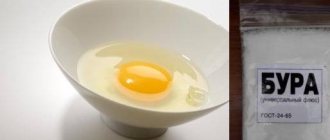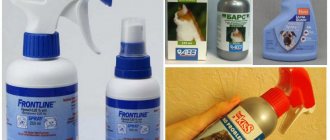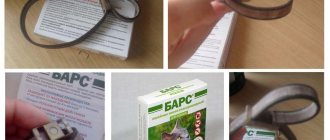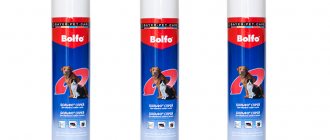Any cat can encounter a flea infestation, even if it is a city dweller who rarely goes outside. But for pets who live in a private home and love to walk in the yard, this is a completely common occurrence. Fleas can cause representatives of the cat family a lot of trouble - from unbearable itching to serious illnesses.
As you know, it is easier to prevent an encounter with parasites than to get rid of them in the future. There are many means for this, among which flea collars have become very popular - accessories that reliably protect pets from dangerous insects. However, for all its simplicity and effectiveness, this means of protection has both advantages and disadvantages that are important to consider.
How does a flea collar work?
To understand whether a flea collar helps cats and how this happens, it is enough to understand the mechanism of its action. There are two main options: repellent scented impregnation or radiation/ultrasound.
Does a domestic cat need a collar?
Even a pet sitting at home may need protection. When an anti-flea accessory is needed:
- fleas penetrate from the basement into the living space;
- the pet has contact with a walking animal, lives with it in the same territory;
- During the warm season, there is a surge in the number of fleas in the area or region.
If it’s cold winter outside and the cat is sitting at home, you can do without protection.
Mechanism and duration
The basic principle of operation of the accessory is simple: the repellent-insecticidal composition with which the material is treated repels or kills parasites. If a cat has a severe infection, then the healing process can be seen with the naked eye - the fleas begin an emergency “evacuation”. Only ultrasonic and radiating models differ in their principle of operation, but they are quite expensive, so they are in little demand. Ordinary products are harmless, the main thing is to comply with the conditions specified in the instructions for the product.
What substances are applied to the base of the accessory?
- Essential oils
(coniferous, citrus, mint, etc.). They play the role of repellents: they repel insects, are safe, but ineffective against parasites that have already settled in the fur.
- Imidacloprid
. A chemical that paralyzes fleas. Refers to modern pharmacological agents. Imidacloprid impregnation is effective for several months.
- Permethrin
. An effective insecticide, but its safety is questionable: the drug is quite poisonous, so if worn for a long time it can provoke functional disorders (liver disease, nervous system disorders).
- Sevin
. An effective insect repellent. Moderately toxic. It does not accumulate in wool and skin, but with prolonged use it can cause irritation or dermatitis.
- Propoxur
. Repellent and insecticidal agent. The effect of the main substance is visible within the first day. Moderately toxic, does not penetrate the blood, but spreads through the skin and fur.
- Metropen
. Gives 100% results, but is highly toxic. Veterinarians do not recommend it for weakened, lactating, pregnant cats, older animals, or kittens.
- Phenothrin
. Known both in veterinary and human pharmacology. Destroys adult parasites and their larvae.
- Fipronil
. Has a nerve-paralytic effect on insects. It is quite dangerous, as it can cause serious poisoning if it enters the body. It does not enter the blood through the skin and fur.
- Diazinon
. Repellent and insecticidal agent. Inhibits the nervous system of insects, paralyzing them. It spreads over the outer skin, but does not penetrate the bloodstream, often causing a bunch of allergic reactions.
- Tetrachlorvinphos
(TCVP). Harmless and hypoallergenic substance. Spreading over the outer integument of the animal, it does not penetrate the bloodstream.
It is important to use the anti-parasitic collar correctly. Even if this is not the first time you put it on an animal, read the instructions and follow all the requirements.
Does a flea collar help cats?
How a flea collar for cats works: it kills or paralyzes parasites, depending on the main working product. The active ingredients create a protective barrier on the animal's fur, preventing the infestation of fleas and ticks. How long the accessory will work depends on the type of impregnation, the activity of the cat (goes outside or not), and the degree of infection.
The level of efficiency also depends on the manufacturer, since not all companies carefully monitor compliance with the standards established in production. Conscientious companies use expensive imported materials, due to which the collar lasts up to six months and does not cause any side effects or complications.
We weigh the pros and cons
The popularity of anti-parasitic collars can easily be explained by their advantages. Anyone who has ever tried them on their pets will use them again. A short list of advantages:
- they are convenient and effective;
- have both a therapeutic and preventive effect;
- most models have a normal price, long shelf life;
- some accessories are suitable for treating pregnant, lactating, sick cats, as well as kittens;
- guarantee the cat's safety while walking.
With a quality product, the cat will be protected from parasite bites - and therefore from the diseases they carry.
Unfortunately, there are disadvantages that cannot be kept silent about:
- specific pungent aroma;
- risk of allergies, especially in sensitive pets;
- may cause hair loss on the neck;
- when wet, the product may lose its beneficial properties;
- ultrasonic models are very expensive;
- low-quality products cause cat poisoning.
The collar may cause individual intolerance. If your cat develops unpleasant symptoms, you should immediately remove the accessory and consult a veterinarian. The doctor will suggest an alternative method of protection against fleas.
Indications
This product will be useful for animals that often itch due to parasites in the warm season.
Wearing a flea collar is recommended as a preventive measure and during the season of special activity of bloodsuckers, fleas, and lice - this is the warm season from April to October. Therefore, if the owner notices that his pet is constantly itching, licking his fur, and there are other signs of infestation, you can wear a flea collar for cats after consulting with a veterinarian. The therapeutic effect will be better if you first treat the cat with special insecticidal drops, and after 10-14 days put on the product.
Types of flea collars
There are four main types of anti-parasitic accessories. They are divided according to the principle of operation and the level of safety.
Biological
Made from rubber. Their main effect is protective; such models cannot cope with the destruction of existing fleas. Essential oils or natural poisons (usually from herbs) are used as impregnation for bio-collars. Such odors are harmless to cats, but perfectly repel ectoparasites. Bio-collars are not dangerous for the cat’s body and are environmentally friendly, although they can sometimes cause allergic reactions (itching, redness, dermatitis), this is due to individual intolerance. The shelf life of biomodels is approximately three months. Recommended for pregnant and lactating cats, as well as for kittens up to one year old.
Insecticidal
They are made from a rubber or polyvinyl chloride base and are impregnated with an antiparasitic composition. The advantages include their real effectiveness, and the disadvantages include the danger of toxic effects on the cat. Before use, it is recommended to stretch the device slightly to activate the active substance. Such products have a protective effect for several months.
Ultrasonic
The fabric base of the cat flea collar is supplemented with a mini-device that emits ultrasound, which is not perceptible to the human ear, but has a depressing effect on insects. It is completely harmless for pets. The mechanism is started by a battery, the performance of which determines the effectiveness of the accessory. Perhaps the only drawback of such devices is the significant price.
Radiating
The mechanism of action of the radiating collar is the propagation of electromagnetic waves, which have a destructive effect on ectoparasites. The advantages of this option include odorlessness and non-toxicity. However, they are not capable of adversely affecting eggs with larvae, and besides, the safety of electromagnetic radiation is a controversial issue.
Regardless of the model type, the listed accessories are suitable for representatives of all breeds: short-haired and long-haired.
Flaws
Unfortunately, even a seemingly ideal remedy for fleas for cats has its drawbacks, albeit minor ones.
- Many buyers of the collar noticed an unpleasant aroma, which did not annoy the pets, but sometimes did not suit the owner at all. Indeed, there is an unpleasant odor, but it is noticeable only in the first days of use and only after prolonged close contact between a person and a cat.
- Regardless of the purpose (decorative, walking, anti-flea), every collar has this drawback - gradual abrasion of fur. Therefore, be careful when deciding to put a collar on a cat for a long time.
- There are rare cases when toxic collars cause allergies in a pet, which is associated exclusively with the body of the pet. Therefore, carefully observe your pet during the first three to four hours of wearing the collar. If you notice redness in the neck area, immediately remove the accessory and consult a specialist.
Can there be side effects?
When using cat flea collars, be aware of possible side effects. Not all manufacturers use high-quality materials when making a product. When purchasing a flea collar for your cat, carefully read the instructions and make sure that the manufacturer has positive reviews. A low-quality product will do more harm than good. It is necessary to take into account that a flea and tick collar for cats, even from a trusted manufacturer, may have side effects. Among them the most common:
- skin irritation, allergies;
- hair loss;
- an unpleasant odor that causes severe discomfort to the animal.
During initial use, be sure to monitor possible changes in your pet’s behavior in order to help him in time - if necessary.
The cat was poisoned by a flea collar - what to do?
A negative reaction may not occur immediately, so do not let your guard down. What symptoms should you pay special attention to:
- lethargy, apathy;
- vomit;
- lack of appetite;
- constant itching on or near the neck;
- increased salivation.
If you notice at least one of the listed symptoms, remove the product and immediately contact your veterinarian. To avoid causing unnecessary stress to your pet, you can call a veterinarian to your home. While the doctor is visiting you, give the animal clean water to help the kidneys remove toxins from the body.
Cat itches from flea collar
If your cat keeps trying to scratch under the collar, there are two possible problems: allergies or simple chafing. In the second case, you can simply loosen the seal, and the itching will stop almost immediately. With allergies the situation is more complicated.
Allergy to flea collar
An allergic reaction can manifest itself as:
- itching;
- hair loss;
- redness of the neck, eyes, lacrimation;
- stuffy nose;
- red blisters on the skin with clear liquid.
Perhaps the animal is allergic to a component of the impregnation - try changing one model to another. If this doesn’t help, switch to sprays or ultrasonic collars.
Advantages
We mentioned earlier that in addition to collars, there are other types of protection for cats against fleas. But why is it better to give preference to them rather than shampoos and special drops? To answer this question, we present a number of benefits of collars.
- First of all, it is cheap. If you wish, you can find a collar that is accessible to any wallet. By the way, it is the low price that makes it possible to frequently use collars not only when parasites are detected in cat fur, but also for preventive purposes.
- The next advantage is ease of use. When using drops, it is necessary to limit the cat's hygiene procedures, and removing fleas with tweezers will require certain skills. With a collar, the situation is much clearer: just cut off the required length of the new cat accessory and put it on your pet.
- Convenience. And here we are talking about comfort for the pet. The collar easily adjusts to the thickness of the pet’s neck, so the cat will definitely not have the desire to somehow get rid of the anti-flea accessory.
- The next plus will be especially pleasant for residents of private sectors. It's about safety. After all, very often cats prefer to leave their home for a long time and return after a few days. In this case, the collar will be an additional sign that this animal is not homeless.
- Hygiene. Anyone who has ever used flea drops on their cat knows that when they are used, there is an immediate need to wash the pet. And here many problems arise. Firstly, many cats do not like water treatments, so every bath time is a real stress for them. Secondly, cat fur does not require any hygiene procedures other than licking. Therefore, extraordinary digging can lead to a deterioration in its quality and loss of its attractive appearance, which is especially important for show breeds.
- Relative safety. Although there are some types of cat flea collars that contain toxic substances, they are much less dangerous than those that can be found in drops or shampoos. For this reason, after applying the latter, many veterinarians advise putting special restrictive collars on the cat that do not allow its tongue to reach the fur.
How to use the collar correctly
Even the best quality collar can be ineffective or harmful if used incorrectly. The surest way not to make a mistake is to read the instructions included with the product.
Precautions and contraindications
Like any medications, flea collars for cats have their own contraindications. Not all types are suitable for kittens, pregnant cats, sick and weakened animals. All restrictions are stated in the instructions.
For allergy sufferers, kittens and mother cats, special safe models are suitable: they will be recommended by a veterinarian or a seller at a veterinary pharmacy. Remember that babies under 2 months are vulnerable even to weak substances; for them, you need to choose a different method of getting rid of fleas.
Also, the animal should not wear the accessory all the time. The poisons it contains tend to accumulate in the animal’s body - this leads to diseases of the internal organs and disruption of the functioning of some body systems. To avoid this, take a break from wearing it every 3-4 months.
The health of your pet depends on compliance with basic requirements. Products from well-known manufacturers usually have detailed instructions on proper use and storage; these recommendations should not be neglected.
How to use the collar:
- After unpacking, the accessory is immediately put on the cat and precisely adjusted to size. It should be inaccessible for licking, but also not fit too tightly to the neck so as not to rub it.
- First, you need to put on the device for a short time and carefully monitor the cat’s condition to exclude allergic reactions.
- When an item is put away for storage, it should be packaged in a plastic bag or film.
- The expiration date is indicated in the instructions and varies from one month to six months.
The simultaneous use of several anti-parasitic agents, for example, a collar and shampoo/drops, is unacceptable. This can lead to acute intoxication. If the infestation is very serious, you can first use medicinal drugs, and after one or two weeks put on a collar.
Is a flea collar suitable for kittens?
Depending on the active substance used, the accessory may be contraindicated for kittens, since some poisons can be dangerous for a fragile organism. Collars for kittens have been developed especially for such cases. They have a smaller diameter and consist of safer components. But even before purchasing a specialized drug, carefully read the instructions at what age of the animal it can be used. Mostly biological varieties are suitable for kittens.
Can pregnant and lactating cats wear a collar?
This issue is very acute and should be approached with caution. Pregnant cats can be fitted with biological or ultrasonic collars, but it is best to consult a veterinarian before doing so. You shouldn't make a decision on your own.
It is recommended to avoid using flea collars for cats while nursing, as kittens may lick or bite the accessory during play. It is best to buy safe sprays or folk remedies (for example, put wormwood grass under the cat's bed).
When to put on and take off a collar
Do not remove the product from your pet until the expiration date, as this will provide better protection. In case of urgent need, the flea and tick cat collar can be removed and placed in a thick plastic bag - this way it will retain its properties longer.
It is better not to remove the product after walks, as there is a risk that some parasites may still remain on the animal’s body. If you are planning to give your pet a bath, you simply must remove all accessories before doing so.
General instructions for use
The best collars for kittens and cats are selected by a veterinarian, taking into account the individual characteristics of the pet. The doctor will explain in detail why this type of product is needed and tell you how to use it correctly. But there are also general rules of operation, following which you will be able to avoid complications:
After putting the product on your pet, you should check that it does not put pressure on his neck.
- Before putting a flea collar on your cat, you should read the attached instructions in detail. You need to buy a product intended only for a specific type of animal; do not use products for cats intended for dogs.
- Remove the rubber band from the sealed package and unwrap it.
- Secure it around the pet's neck so that the animal does not experience inconvenience or discomfort. The optimal gap between the neck and the tape is 1-1.5 cm.
- The excess length is cut off, but it is worth leaving a small margin in case the collar becomes loose.
- At the end, you should wash your hands well with warm water and soap.
Which flea collar for cats is better: review of manufacturers and prices
According to reviews from veterinarians and experienced breeders, the list of the most popular and in-demand brands includes the following.
Germany, Bolfo
. Inexpensive (450-500 rubles), but effective, suitable for representatives of all breeds. Available in several versions: weakly concentrated and highly concentrated impregnation. The duration of the effect is two to three months. Effective on all types of ectoparasites.
Holland, "Beaphar"
. Also inexpensive (300-400 rubles) and high-quality bio-collar. Essential oils are used as a repellent. It repels insects well, but does not affect existing fleas and larvae. It has a short shelf life (one to two months).
Russia, "Doctor Zoo"
. A reliable domestic manufacturer offers a very inexpensive option (50-70 rubles) with diazinon impregnation. The duration of its beneficial effect is several months. Low toxicity, hypoallergenic, comfortable to wear.
Russia, Bars
. A well-known brand offers a waterproof accessory with a fipronil medicinal composition. Price – 150-200 rubles. It is not inferior to more expensive imported analogues and perfectly repels all types of insects - from fleas to mosquitoes. Valid for no more than three months. Recommended for both adult cats and kittens.
USA, Hartz
. Not the cheapest (700-900 rubles), but a very high-quality option. Produces a destructive and repellent effect. It has a high level of hypoallergenicity. Not afraid of getting wet. Suitable for both adult cats and kittens.
Germany, RolfClub
. Ivermectin impregnation gives a lasting effect without a strong odor. It has a convenient clasp, a minimum number of contraindications and an affordable price - from 200 to 400 rubles.
Russia, “4 with a tail”
. Inexpensive domestic product within the cost of 100 rubles. It is impregnated exclusively with natural oils, so it is suitable for pregnant cats, kittens over 2 months old and adult animals.
Types and features
All collars according to the principle of operation are divided into two types:
- bio collars that repel fleas;
- accessories impregnated with insecticides that cause the death of insects.
The operating principle of the product and the rules for its use are indicated in the instructions.
Biocollars for cats
Biocollars do not contain chemicals, and their action is based on the use of natural ingredients. Most often, the accessory is impregnated with a composition containing essential oils.
Biocollar
The most common plants for controlling parasites are:
- rosemary;
- sagebrush;
- eucalyptus;
- geranium;
- cedar.
This type of collar mainly works only to protect the animal from fleas. If there are already insects, then you first need to get rid of them, and only after that put on the accessory.
Insecticidal flea collars
More effective flea collars for cats are impregnated with a chemical that may contain the following compounds:
- imidacloprid;
- amitraz;
- cyphenothrin;
- permethrin;
- fipronil.
The active substances affect insects by blocking nerve impulses, as a result of which the parasites stop feeding and reproducing and die. Such collars are low toxic and not dangerous for cats, but they get rid of fleas quickly and reliably.
Important! You cannot wash your animal with anti-flea shampoo or treat it with special drops less than 10 days before using the collar. Otherwise, the accumulation of toxic substances in the pet’s body can cause intoxication.
Wearing rules
Many collars emit a specific unpleasant odor, so cats do not like wearing them around their necks. Basic tips for the correct use of collars:
- open the package;
- put the collar on in such a position that your fingers can be easily held between it and the animal’s neck;
- secure it with a special fastener;
- trim the excess length of the tape.
The instructions on the package or from the manufacturer indicate a maximum shelf life ranging from a few weeks to six months. It is best to replace it at least once every 2-3 months.
Important! The period of protection against fleas is 4 - 6 months, against ticks is much shorter - no more than 2 months.
Approximate cost of anti-flea accessories
The cost of collars varies depending on the manufacturer. Imported analogues are priced at 500-800 rubles, depending on the duration of action. There are copies priced at 3,000 rubles.
Russian analogues are priced from 50 to 250 rubles, depending on the composition and duration of action.
It is not recommended to use cheap Chinese analogues. The active substances included in their composition have not been studied. This can negatively affect your pet's health.
Precautionary measures
Due to the fact that the collar contains toxic substances, it is necessary to take precautions when handling it:
- if the collar is ineffective and the pet shows signs of allergies, then an urgent need to change the manufacturer;
- you need to purchase those products that, according to reviews, are recommended as effective;
- use simultaneously with other drugs is prohibited;
- correct placement of the collar on the animal to prevent harmful substances from entering the food tract.
Contraindications and side effects
Contraindications for use include pregnancy, lactation, and the young age of the animal. These are the cases when an antiparasitic drug will not help, but rather interfere, especially if it has strong toxic components.
Using a flea collar also has a number of possible side effects:
- allergy;
- toxic poisoning.
In the first case, the components of the composition are negatively perceived by the cat’s body, in the second, the toxic substance gets inside due to the close contact of the animal with the collar. If any of these symptoms occur, you must remove the product and consult a veterinarian. Since the risks when using the collar are quite significant, the cat’s condition must be carefully monitored for the first 3-4 hours after use.
The cat got poisoned
Signs of body poisoning appear in less than a quarter of an hour. In total, there are 3 stages of intoxication, each with its own symptoms:
- First stage. The cat becomes inactive, reluctant to eat food, and plays active games without interest. She cannot be called sick, this is how the reaction to the ongoing treatment against parasites manifests itself. Good immunity will allow you to recover within 24 hours.
- Second stage. It has more pronounced symptoms: increased salivation, dilated pupils, refusal of water and food. If it is not possible to go to the clinic, the owner can independently help the pet and give it activated carbon according to the scheme: 1 tablet per 10 kg of weight. The tablet must be crushed and dissolved in 10 ml of water, and then gradually introduced into the mouth using a syringe. It is worth repeating the procedure several times every 10 minutes.
- Third stage. The cat shows serious signs of poisoning: apathy, lack of response to the owner, vomiting, foaming at the mouth, impaired movement, trembling or convulsions. In this case, it is necessary to use enterosorbent with the addition of 0.5 teaspoon of petroleum jelly. It will help soften stool and speed up bowel movements. Therapeutic measures must be supplemented with an enema.
If the cat's condition worsens, it is important to contact a veterinary clinic in time to urgently relieve symptoms of poisoning.
Why are fleas and other external parasites dangerous?
Cat fleas feed on the animal's blood, moving through the body in jumps. Insects lay eggs from which larvae emerge; they soon pupate and turn into full-fledged adults. Flea bites cause pain and discomfort to the cat, and the saliva of the parasite that penetrates the wound causes itching and can cause anxiety and severe allergic reactions. An insect can be a carrier of dangerous diseases:
- hepatitis A,
- salmonellosis,
- encephalitis,
- feline distemper,
- typhus and others.
Fleas are extremely resistant to adverse environmental conditions. Having fallen off the pet's fur, they can live in an apartment for a long time - behind baseboards, in carpets and other furnishings, until they find a new victim. Parasites also carry helminth eggs, which they feed on. If a cat accidentally swallows a flea while combing its fur with its paw, tapeworms are likely to appear in the intestines. Blood-sucking insects are especially dangerous for kittens; they often cause low weight and anemia in animals.
Other types of blood-sucking insects are no less dangerous for cats. Thus, ticks can be carriers of borreliosis and anaplasmosis. Symptoms of the disease include fever, anemia, nosebleeds, kidney and liver damage. Mosquitoes often cause the development of dirofilariasis, which destroys vital organs.
Lice eaters feed not only on blood, but also on fur and particles of cat skin. They are much smaller than fleas and are difficult to see. At the same time, they can cause severe discomfort to the animal - cause itching, skin rashes, hair loss, and helminth infection.

